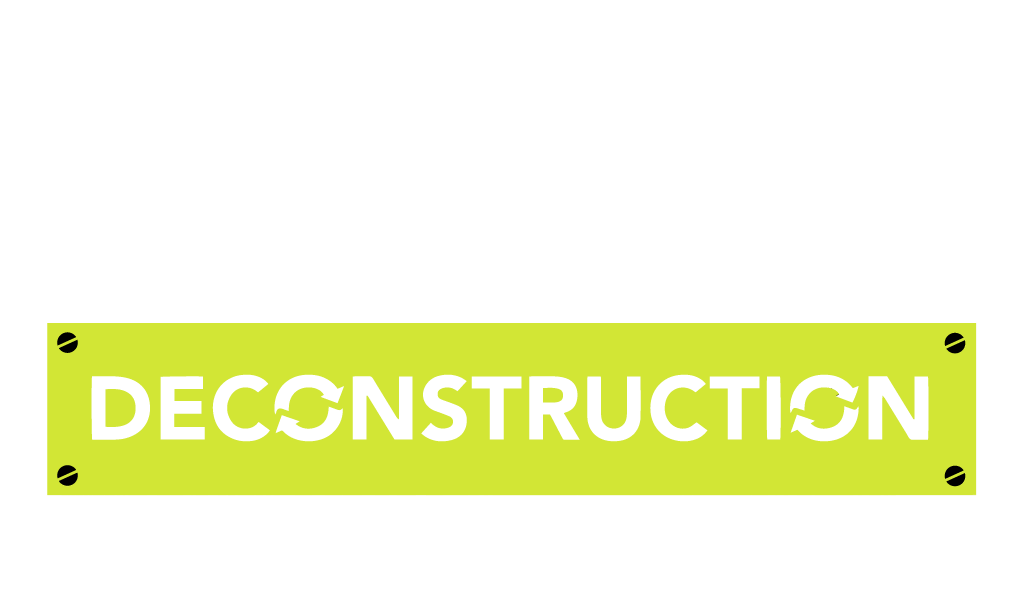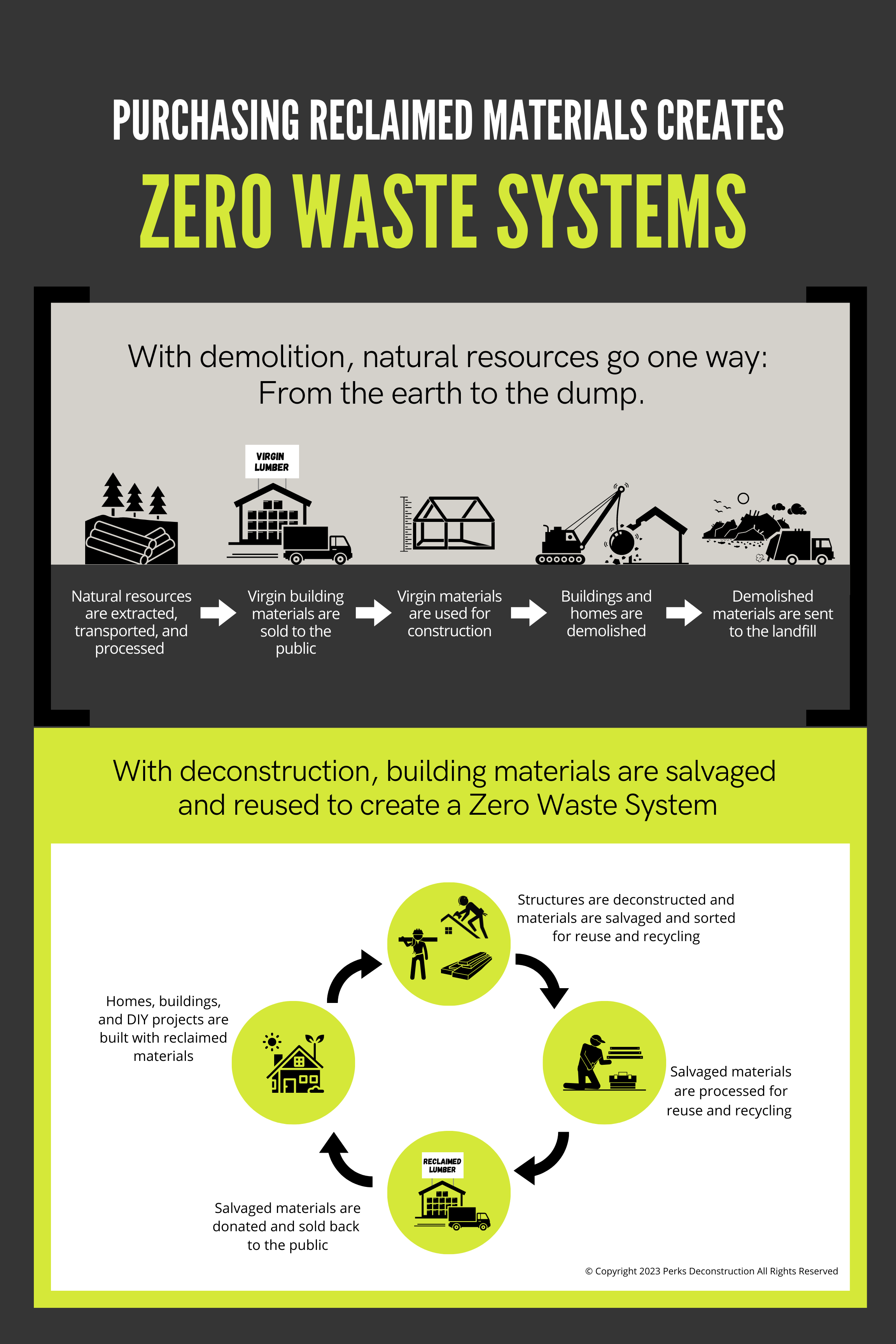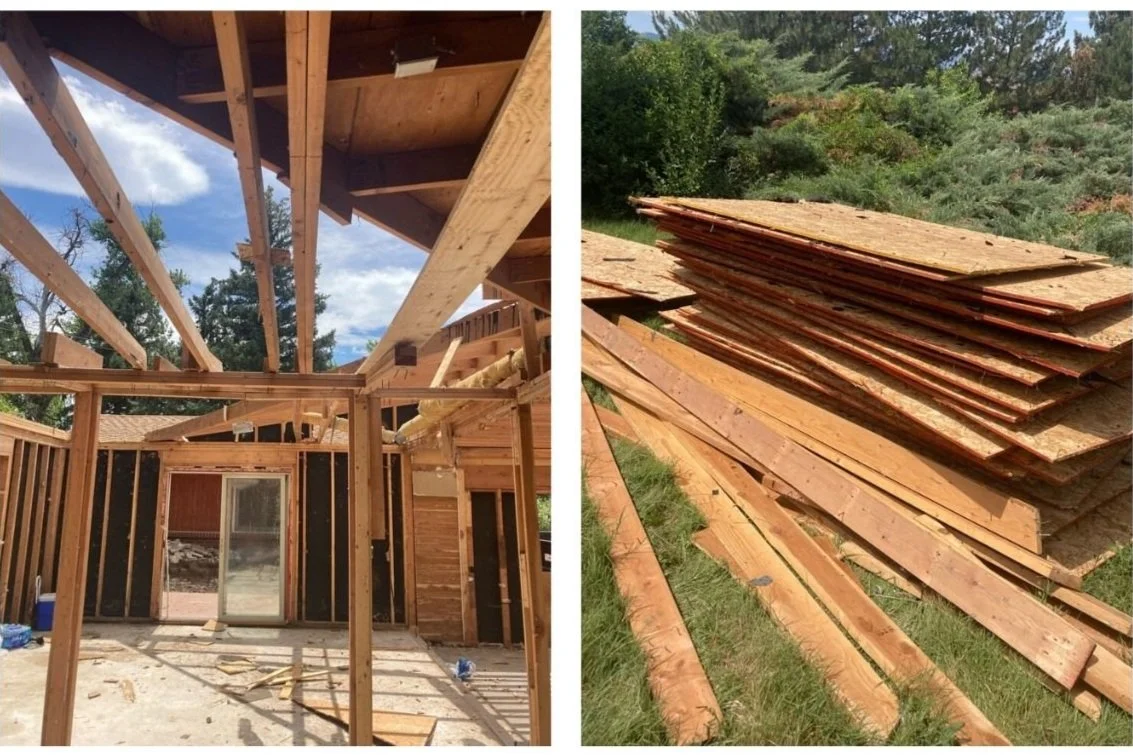Deconstruction and the circular economy
How sustainable deconstruction practices create a circular economy that provides economic, environmental, and social benefits for communities
In nature, there is no waste. This is perhaps the crux of a circular economy — to create an economic system for producing, consuming, and discarding goods that prevents waste and pollution through smart design, and where unwanted goods are reclaimed and recycled for use in the making of future goods, all while conserving and regenerating the natural systems that are typically sacrificed to make our “stuff.”
We’re proud to model our business after the principles of a circular economy. By salvaging, reusing, and recycling as many materials as possible from every demolition job, we’re creating a localized, green production loop that minimizes energy usage and transportation, preserves the highest value of materials that are typically trashed, and puts used building materials back in the production cycle.
So, what is a circular economy?
Let’s dive into what makes up a circular economy and how our deconstruction services are aligned with this economic model for environmental and social good.
3 principles of a circular economy & how they relate to deconstruction
Circular economy principles via the Ellen MacArthur Foundation
Circular economy principle 1: Reduction or elimination of waste and pollution
Deconstruction allows for the surgical removal of building materials to salvage, reuse, and recycle as many materials as possible
In a circular economy, waste does not exist. Rather, waste is a product of bad product design and ineffective recovery (recycling) processes.
The top priority with deconstruction is to prevent as many building materials as possible from going to the landfill and instead creating a local, low-cost, green building materials market of reused and recycled materials.
Instead of bulldozing and landfilling materials, more conscientious practices are implemented to preserve the value of all materials. For example: When a house is deconstructed, workers take it apart methodically in the reverse order the structure was built, preserving and sorting each material. Materials are then sorted for reuse and recycling, and only what cannot be recovered responsibly is landfilled.
The act of carefully removing materials with surgical precision, rather than bulldozing, also prevents potentially toxic materials from entering the air and polluting nearby spaces, creating a cleaner, less hazardous process that takes the environment and public health into account.
Circular economy principle 2: Extension & circulation of products and materials at their highest value
Deconstruction prioritizes the “highest and best use” for materials, choosing “reuse” before “recycling” at every opportunity
Before every deconstruction job, materials are assessed for their value. Categories are created based on the condition of materials and material types, and a reuse and recycling plan is created based on the “highest and best use” of the materials, with the goal of extending the life of each material as much as possible. Values of salvaged materials are also determined for potential tax deduction savings.
The process uses a Zero Waste hierarchy of highest and best use to determine how to handle unwanted building materials. For example: If materials can’t be repurposed or reused on-site, the next most eco-friendly option is to donate materials for reuse. If materials are not in good enough condition to be reused, the next best option is to recycle the material. If the material cannot be repurposed or recycled, only then is it sent to the landfill. This ensures that each material remains in use as long as possible before it is considered “trash.”
Circular economy principle 3: Regenerating natural systems
The goal of a circular economy is to not only prevent waste and pollution by extending the use of materials – it is also to regenerate the natural systems that are so often depleted and exploited to create our goods.
Deconstruction practices reduce the pressure put on our finite natural resources, helping to conserve and regenerate natural systems like forest ecosystems
When it comes to deconstruction, the process of salvaging and selling reclaimed lumber is a wonderful example of how reusing materials results in the conservation of natural resources. Deconstruction makes salvaging lumber from homes – which can be the equivalent of harvesting 44 trees worth of wood – a priority. This salvaged lumber gets donated and sold back to the public, creating a greener and more economical building option for renovators and contractors.
Reclaimed lumber markets help relieve the pressure put on forests to keep up with growing construction demands. Purchasing reclaimed lumber instead of virgin lumber whenever possible helps lessen our dependence on clearcutting and deforestation, which reduces the need for energy-intensive manufacturing processes, prevents habitat destruction and the destruction of native lands, and greenhouse gas emissions that contribute to climate change.
“The circular economy tackles climate change and other global challenges like biodiversity loss, waste, and pollution, by decoupling economic activity from the consumption of finite resources.”
— Ellen MacArthur Foundation
Your role
There are many ways you can directly support a local, circular, sustainable economy, especially in the Denver area:
When approaching a renovation project, ask yourself: “Can I reuse any of my existing material in my new project design?” If not, hire a crew that can remove the material and donate it for reuse — i.e. a deconstruction company.
When renovating your home, opt for locally reclaimed lumber, flooring, and other building materials. If you’re in the Denver area, check out the Perks Deconstruction Reclaimed Lumber Warehouse
Stay in touch and Denver/Boulder-area green building news and updates with our e-newsletter, Green Building Inspo & News, sent only 6 times per year. Sign up here
Spread the word about deconstruction practices to your friends and family, and share this blog on social media




